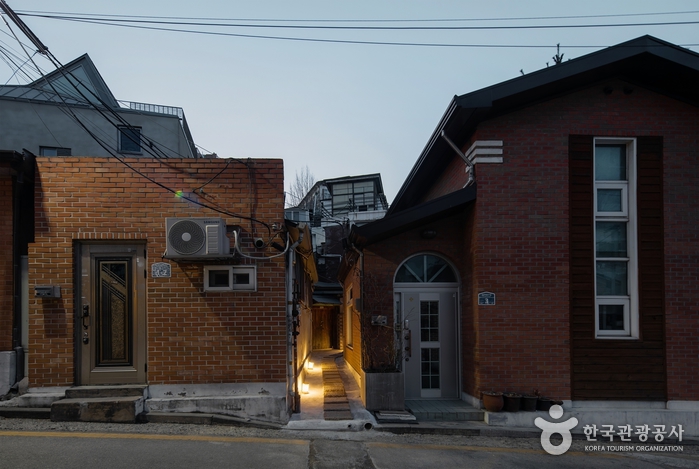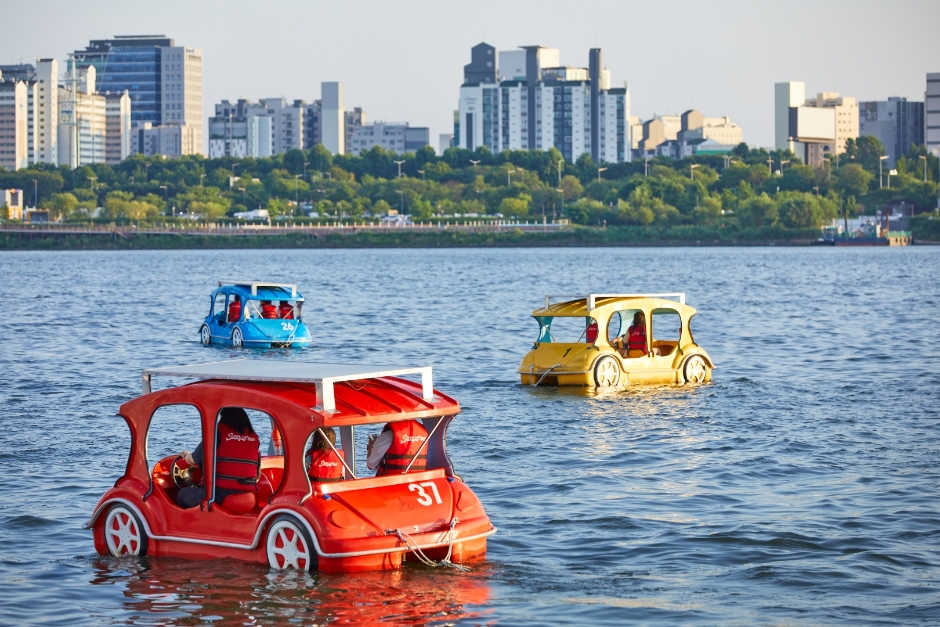Mh Butter - Hongdae Branch [Tax Refund Shop] (MH 버터 홍대)
7.7Km 2024-04-18
B2, 153, Yanghwa-ro, Mapo-gu, Seoul
-
Yonsei University (연세대학교)
7.7Km 2023-07-04
50, Yonsei-ro, Seodaemun-gu, Seoul
+82-1599-1885
Yonsei University, which opened in 1885, is a prestigious university that boasts a beautiful campus. In particular, it is famous for its wooden trails, antique buildings covered with ivy, and Cheongsongdae Forest, a popular dating spot among couples. Yonsei University also has a Korean language institute for foreigners interested in learning Korean.
EW Spao - AK & Hongdae Branch [Tax Refund Shop] (EW 스파오 AK&홍대)
7.7Km 2024-04-18
4F, B188 Yanghwa-ro, Mapo-gu, Seoul
-
Nuwa (누와)
7.7Km 2024-12-23
3-1 , Pirundae-ro 5na-gil, Jongno-gu, Seoul
+82-504-0904-2313
Nuwa is a small, tastefully-renovated private hanok in the Seochon Village residential area to the west of Gyeongbokgung Palace in Seoul. It gets the light through a window wall in the living room, which contains a walnut table where guests can take tea, and a bathtub: weary travellers will feel better after taking a foot bath or half-body bath. High-quality tea and bath salts are provided. The sleeping space has an unusual round window, like a full moon, facing the bed, through which guests can see the top of Inwangsan Mountain as they fall asleep.
Idolllook - Hongdae Branch [Tax Refund Shop] (아이돌룩 홍대)
7.7Km 2024-04-18
4F, 74, Hongik-ro 6-gil, Mapo-gu, Seoul
-
8th Avenue WithPharm Pharmacy [Tax Refund Shop] (8번가위드팜약국)
7.7Km 2024-04-19
515, Seongsan-ro, Seodaemun-gu, Seoul
-
Kakao Friends Flagship Store - Hongdae Branch [Tax Refund Shop] (카카오프렌즈 플래그십 홍대)
7.7Km 2024-04-18
B2-F3, 162, Yanghwa-ro, Mapo-gu, Seoul
-
Sunset Leisure 435 (썬셋레저 435)
7.7Km 2023-07-04
서울특별시 마포구 망원동 205-5
Mangwon Hangang Park is famous for its amenities, and what better than the iconic duck boat to get the most out of Hangang River? Hangang River is a wide river ranging up to 1 - 2km in x_width, so go for a joyride with duck boats on the river. One can also opt for electric boats for a more comfortable experience, depending on one’s preferences and the group size. Duck boats are particularly popular on the weekends and holidays, so it is recommended to place reservations before heading there.
![Mh Butter - Hongdae Branch [Tax Refund Shop] (MH 버터 홍대)](http://tong.visitkorea.or.kr/cms/resource/78/2889578_image2_1.jpg)

![EW Spao - AK & Hongdae Branch [Tax Refund Shop] (EW 스파오 AK&홍대)](http://tong.visitkorea.or.kr/cms/resource/64/2888864_image2_1.jpg)
![Hongik Pharmacy [Tax Refund Shop] (홍익약국)](http://tong.visitkorea.or.kr/cms/resource/48/3312848_image2_1.jpg)

![Idolllook - Hongdae Branch [Tax Refund Shop] (아이돌룩 홍대)](http://tong.visitkorea.or.kr/cms/resource/08/2888708_image2_1.jpg)
![8th Avenue WithPharm Pharmacy [Tax Refund Shop] (8번가위드팜약국)](http://tong.visitkorea.or.kr/cms/resource/75/2890675_image2_1.jpg)
![Doctor Petit [Tax Refund Shop] (닥터쁘띠의원)](http://tong.visitkorea.or.kr/cms/resource/86/3314486_image2_1.jpg)
![Kakao Friends Flagship Store - Hongdae Branch [Tax Refund Shop] (카카오프렌즈 플래그십 홍대)](http://tong.visitkorea.or.kr/cms/resource/36/2878336_image2_1.jpg)

 English
English
 한국어
한국어 日本語
日本語 中文(简体)
中文(简体) Deutsch
Deutsch Français
Français Español
Español Русский
Русский